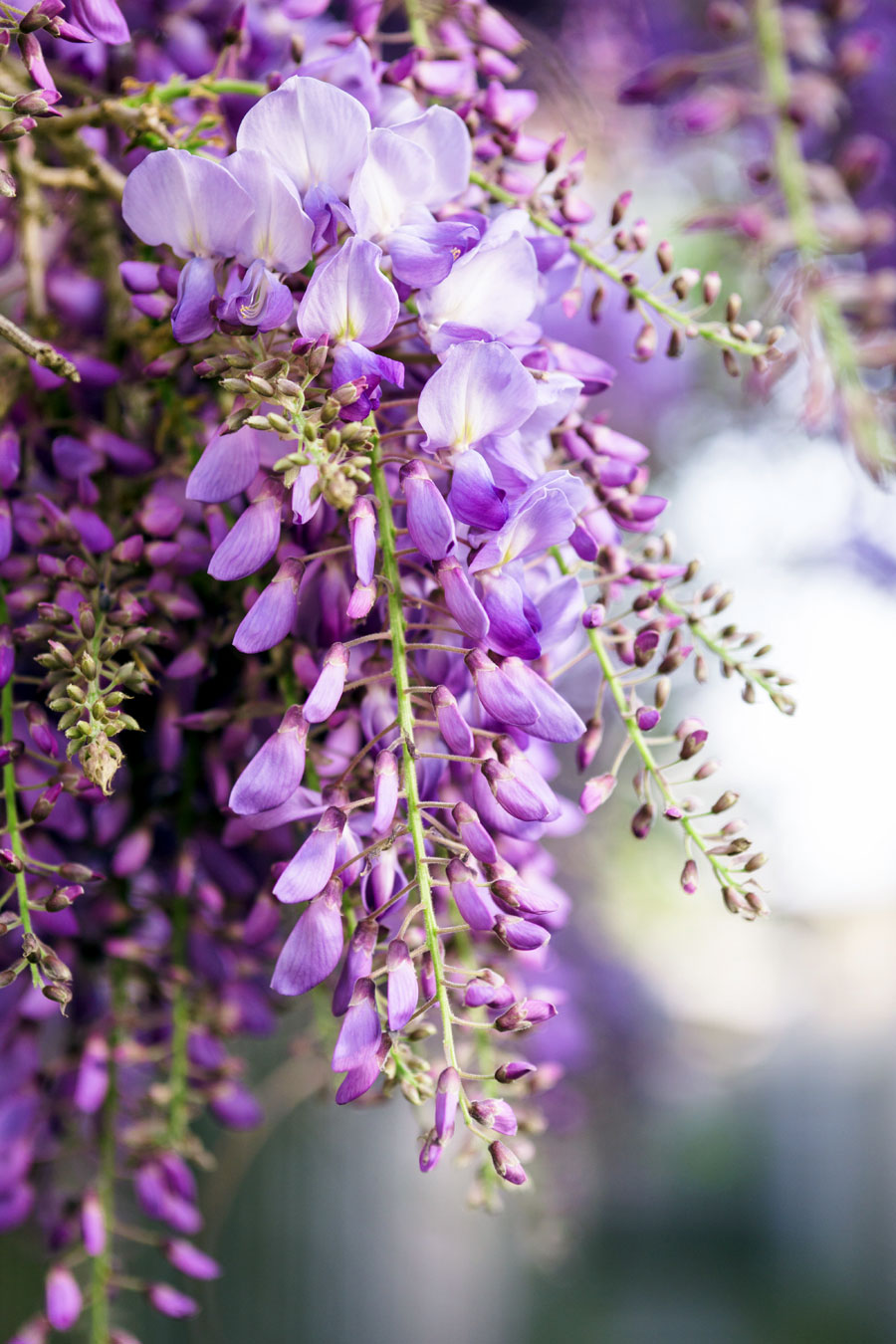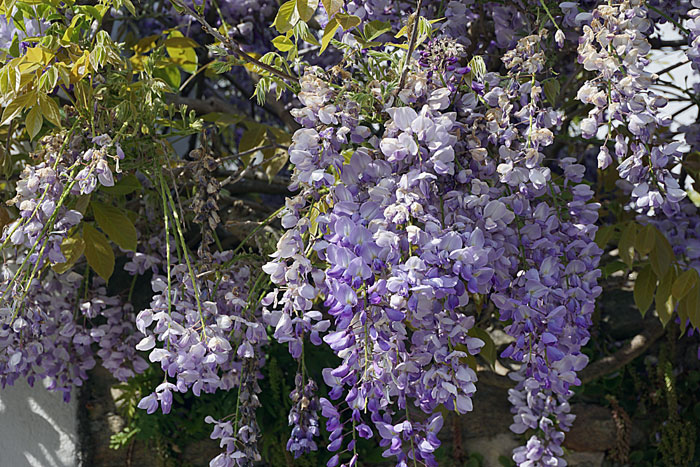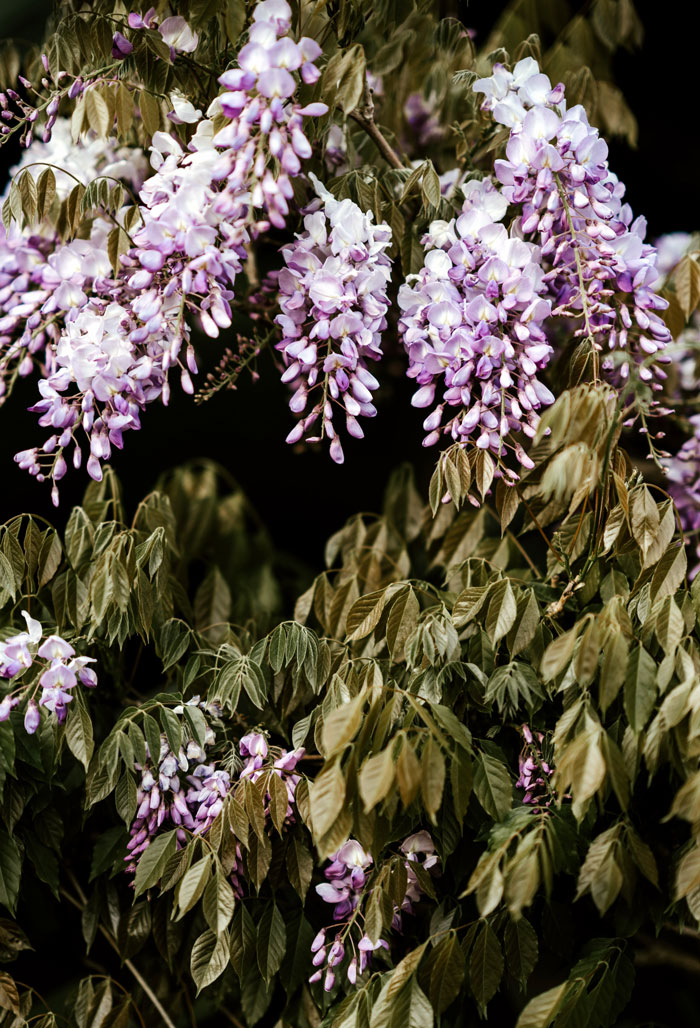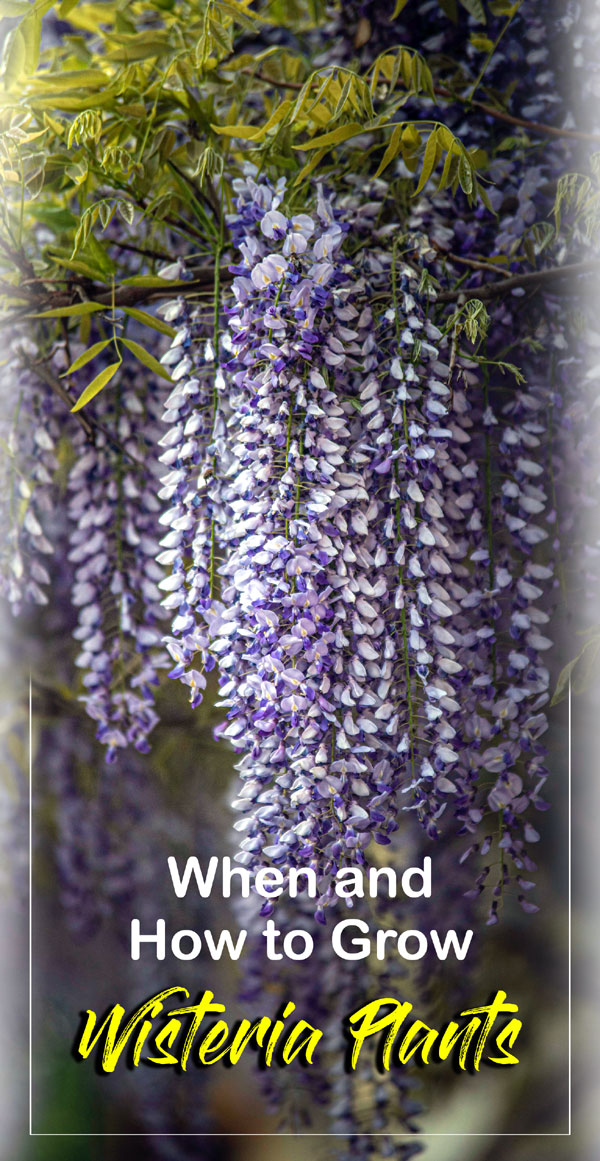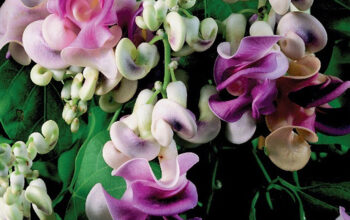Growing Wisteria plant
The Wisteria vine is an attractive deciduous climber. A mature wisteria plant can completely transform the look of a home by producing stunning scented flower pendants in May or June. In terms of species, there are many wisterias, but the two most popular are Wisteria Sinensis and Wisteria floribunda. There is an anticlockwise growth pattern for Wisteria Sinensis and a clockwise growth pattern for Wisteria floribunda. Leaf alternates have up to 19 leaflets. They are triangular and pinnately compound (feather-like). Growing wisteria vines in containers can be easy if you train them like a tree in a larger container.
Large clusters of flowers droop from the tree, displaying blue, purple, rose, or white hues. Despite their long, narrow shape, the seeds are poisonous and are carried by legumes. Cuttings and grafts are usually taken when the plants are several years old and are thus cultivated from cuttings.
Overview of Wisteria Plants
Scientific name Wisteria
Common name Chinese wisteria.
Plant type flowering plant
Sun required Full Sun
Soil well-drained, loamy soil
Soil pH 6.0 – 7.0
Zone 5-9
When and How to Grow Wisteria Plants
The growth of wisteria is pretty straightforward, but you should be careful to avoid it overtaking everything else if you fail to properly care for it.
The location of the wisteria vine is the most important aspect of growing it. Twisting vines, such as wisteria, require stable support and regular pruning to remain under control. The best place to grow is in an open area surrounded by easily mowed grass. When they becomes established and mature, it begins to bloom with gusto several years later. Nevertheless, a lack of bloom may also be due to over-fertilization, improper pruning, frost injury to the flower buds, or too much shade.
Sunlight
Since this plant doesn’t do well in low temperatures, make sure it is receiving ample sunlight. Sunlight should be available for at least six hours per day for these plants. In partial shade, the plant is capable of growing well, but it may produce fewer or no flowers. Provide at least six hours of direct sun exposure to the upper part of the plant every day.
Watering
When it does not rain, water them every couple of days or when the top few inches of soil feel dry when you insert your index finger into it. In pots and baskets and in the ground, annuals will likely need water every day. Check them at least once a day, to see if water is coming out of the drainage holes. Until they’re established, perennials require regular watering. Once the plants are established, only water them when they are dry. A week of watering during a drought will ensure that the soil is completely moist. To avoid causing disease, put water directly on the soil.
Soil
Well-drained, loamy soil with ample nutrients and proper aeration is ideal for growth. It is important to plant wisteria in moist, fertile soil that drains well. Wisteria does not like to have “wet feet.” If your soil does not have enough organic material, add compost. Otherwise, most soils will support this plant.
Feeding
The best fertilizer to use on wisteria is a low-nitrogen one that is applied every year or every other year. The nitrogen fertilization process does promote growth, so the step is important. You can grow your plant without fertilizer, technically, but fertilizer can help encourage faster growth and more blooms. Be sure to observe your plant’s foliage; it should be dark green. If it is not, feed the plant as needed, but be careful not to overfeed it. You should fertilize young wisteria annually until it reaches maturity, and then fertilize based on the color of the foliage afterward. Additionally, you can add phosphorus to the soil to stimulate flowering. In spring, mix in some bone meal, and in fall, add in some rock phosphate.
Pruning
Late winter is the best time to prune wisteria. Take out approximately half of the previous year’s growth, leaving only one or two buds per stem. Prune in the summer after traditional blooms if you want a formal appearance. Flower buds emerge from new growth in the main shoots of Wisteria. All this year’s new shoots should be pruned back to a spur, leaving no more than six inches of growth. So that there aren’t any loose, trailing shoots, the whole plant can be pruned, trained, and tied in during this process. Usually, mature plants are pruned little or not at all when they are grown informally. If you have a formally trained plant, you can cut back side shoots in summer to 6 inches, and then shorten them again in the winter to 3 buds.
Read also:
How to grow and care for Dieffenbachia houseplants. Freesia plants growing and caring guide. Growing and care for sedum plants. Growing anthurium in containers. How to grow and care for Hoya plants. Crossandra flower growing guide. Best flowers for bees and butterflies. Chinese fringe flowers growing tips. Nigella damascena flowers growing tips.
For pin :

